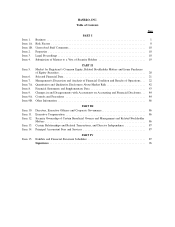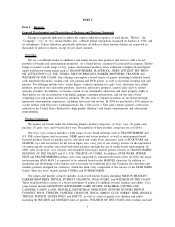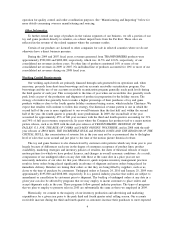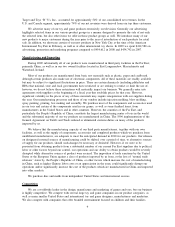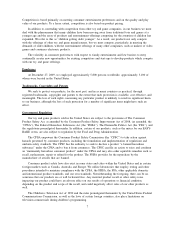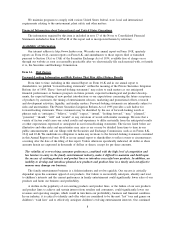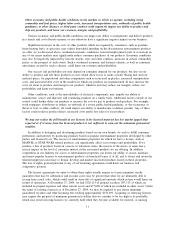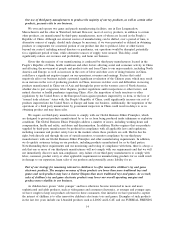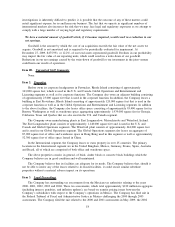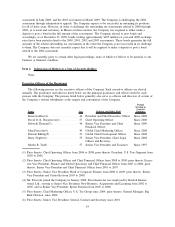Hasbro 2009 Annual Report Download - page 19
Download and view the complete annual report
Please find page 19 of the 2009 Hasbro annual report below. You can navigate through the pages in the report by either clicking on the pages listed below, or by using the keyword search tool below to find specific information within the annual report.success will depend on our ability to develop, market and sell popular toys, games and other entertainment
offerings, and license our brands for products which are sought after by both children and their parents. We
seek to achieve and maintain market popularity for our products through the continued re-imagination, re-
invigoration and extension of our existing family entertainment properties in ways we believe will capture
evolving consumer interest and imagination, offer immersive brand experiences and remain relevant in today’s
world, and by developing, introducing and gaining customer interest for new family entertainment products.
This process involves anticipating and extending successful play patterns, offering continual product innovation
and identifying entertainment concepts and properties that appeal to children’s imaginations. However,
consumer preferences with respect to family entertainment are continuously changing and are difficult to
anticipate. Evolving consumer tastes, coupled with an ever changing pipeline of entertainment properties and
products which compete for consumer interest and acceptance, create an environment in which some products
can fail to achieve consumer acceptance, and other products can be extremely popular during a certain period
in time but then rapidly be replaced in consumer’s minds with other properties. As a result, individual family
entertainment products and properties often have short consumer life cycles.
Not only must we address rapidly changing consumer tastes and interests but we face competitors who
are also constantly monitoring and attempting to anticipate consumer tastes, seeking ideas which will appeal to
consumers and introducing new products that compete with our products for consumer purchasing. In addition
to existing competitors, the barriers to entry for new participants in the family entertainment industry are low.
New participants with a popular product idea or entertainment property can gain access to consumers and
become a significant source of competition for our products. In some cases our competitors’ products may
achieve greater market acceptance than our products and potentially reduce demand for our products.
The challenge of developing and offering products that are sought after by children is compounded by the
trend of children “getting older younger”. By this we mean that children are expanding their interests beyond
traditional toys and games to a wider array of entertainment products at younger ages and, as a result, at
younger and younger ages, our products compete with the offerings of video game suppliers, consumer
electronics companies and other businesses outside of the traditional toy and game industry.
There is no guarantee that:
• Any of our current products or product lines will continue to be popular;
• Any property for which we have a significant license will achieve or sustain popularity;
• Any new products or product lines we introduce will be considered interesting to consumers and
achieve an adequate market acceptance;
• Any new product’s life cycle will be sufficient to permit us to profitably recover development,
manufacturing, marketing, royalties (including royalty advances and guarantees) and other costs of
producing, marketing and selling the product; or
• We will be able to manufacture, source and ship new or continuing products in a timely and cost-
effective basis to meet constantly changing consumer demands, a risk that is heightened by our
customers’ compressed shipping schedules and the seasonality of our business.
In developing new products and product lines, we have anticipated dates for the associated product
introductions. When we state that we will introduce, or anticipate introducing, a particular product or product
line at a certain time in the future those expectations are based on completing the associated development and
implementation work in accordance with our currently anticipated development schedule. Unforeseen delays or
difficulties in the development process, or significant increases in the planned cost of development, may cause
the introduction date for products to be later than anticipated or, in some situations, may cause a product
introduction to be discontinued.
9



